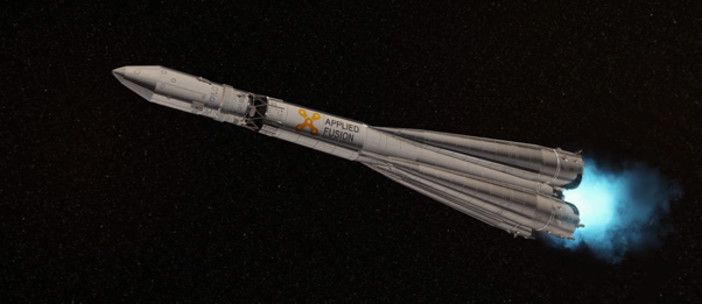UK-based nuclear startup Applied Fusion Systems is testing ion thrusters that could be fueled by a small nuclear fusion reactor and used for deep space and interplanetary travel.
The Oxfordshire-based company says the ion thrusters have been designed to work with recent nuclear fusion breakthroughs. The company is filing a patent for the new technology, which uses a small fusion reactor to propel spacecraft.
There have been a number of recent breakthroughs in ion thruster technology for spacecraft. Ion thrusters use a plasma propellant accelerated to extremely high speeds using a strong electromagnetic field and are used for maneuvering satellites.
Applied Fusion Systems believes a variation of the technology, which it calls Nuclear Enhanced Air-breathing Rockets (NEAR) technology and will need to function in atmospheric conditions, could be adapted to run off a compact nuclear fusion reactor.
Richard Dinan, CEO of Applied Fusion Systems, said, “We have always followed the stars for direction. It’s about time we learned to emulate them.
“We are burning things to power cities at the moment. It’s very inefficient, it’s very dirty and it’s not doing our atmosphere any good. It’s got to stop.
“Fusion is the only candidate we have, it’s what the stars are doing, what the universe is telling us to do as the right way to create energy.
“It’s not a question of do you think it’s coming or not? It is coming, for sure. It is humanity’s only shot at interstellar space travel in the near future.”
Applied Fusion Systems is a privately-owned company primarily focusing on the development and research of small module, nuclear fusion reactors and also seeks to apply the application of recent breakthroughs in fusion technology to innovations in space exploration.
Mark Williamson, a space technology consultant based in Carlisle in the UK, said, “One of the greatest challenges of human spaceflight – apart from the cost – is the time it takes to reach a destination.
“Some researchers believe that the fusion reactor holds the key to faster space travel. Recent NASA studies have suggested that a fusion-powered rocket could reduce the travel time to Mars from nine months to less than 90 days, which would place a Mars trip in the same class as a long-duration space station mission.
“Although several companies are working on fusion reactor technology, Applied Fusion Systems at the UK’s Culham Science Centre thinks it has a cost-effective solution for space – smaller, lighter units that could power not only the propulsion system but also replace the solar arrays that usually feed a spacecraft’s electrical systems.”





